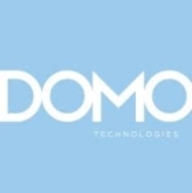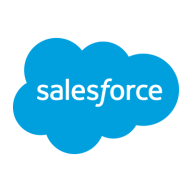


Find out what your peers are saying about Microsoft, Salesforce, SAP and others in BI (Business Intelligence) Tools.
This saves a significant amount of time, particularly for reports that would have needed around fifty people.
The ROI of using Tableau extends to its seamless integration across various platforms, as it's from Salesforce and thus not limited to any specific cloud provider.
Tableau is saving me time, money, and resources, which I would rate as ten.
Using ThoughtSpot has resulted in significant time savings and improved business sales by allowing us to identify sellers and buyers across regions, facilitating targeted marketing.
Based on our implementation in one project, we are trying to raise more funding to expand its use.
ThoughtSpot saves a significant amount of time compared to other tools and is very user-friendly.
They were quite professional and in around three to five working days, they had identified where they suspected there was an issue and I was able to fix it.
While they eventually provide the correct answers, their support for smaller customers could be improved.
The main benefits of using Domo are that the support is good, and comparing it with other BI tools, it has specific specialties.
They provide quick email and phone responses and have Thai-speaking personnel.
There should be consistent standards for all users.
The technical support for Tableau is quite good.
I stopped opening tickets due to insufficient and untimely responses.
ThoughtSpot provides a dedicated customer success person and the ability to submit tickets online, with a response time of no more than a day.
The knowledge base for ThoughtSpot is less robust compared to others.
The fact that you're able to easily identify the pipelines or flows that have errors, and it notifies you when you're building a pipeline where you can run previews and tell where to fix issues, is helpful.
Sigma, which is written for Snowflake, scales more easily than Domo.
The response time is longer than desired, but sometimes they provide the correct solution while other times they don't provide the needed scenarios.
Tableau is easy to use across various dimensions, whether on-premises or on the cloud.
The solution is fully scalable and performs well even with large datasets, provided there is proper supporting hardware.
Tableau is easy to scale.
Tableau, Power BI, or Looker have separate tools for preparation, customization, and storytelling.
The platform does not have technical problems with scaling data or connections.
As our data has grown, I have validated huge datasets and complex models without significant issues.
In recent years, I haven't had such cases. It's quite stable and I don't have any reservations on its stability.
The setup of Domo is challenging as the cache and serialization part still causes errors; since it's fully cloud-based, they need to improve the connectivity part.
The application hangs after continuous use due to the buildup of cache.
I rate the stability a five or six because Tableau updates very often with new versions or patches.
I use it primarily for large datasets, and it performs faster than regular data visualization tools such as Power BI, which has limits on dataset size.
The upgrades are smooth with no downtime, which is super important.
The responsiveness of accessing live data is exceptional and faster than most other BI tools.
End users require a license to run their own reports and dashboards, which are fairly expensive.
Some technical aspects such as Beast Mode calculation could be improved in Domo, as it would provide more clarity and help in giving insights to clients or customer business team requirements.
One of the areas where we've had frustrations with Domo is the aesthetics. The aesthetics are quite limited compared to other BI tools such as Tableau and Power BI.
We cannot send the entire Excel file reports via email within Tableau.
The product owner should enhance its benefits or clarify its role.
It sometimes requires extensive investigation to determine why the data does not appear correctly.
Currently, it is not as customizable as the options available on Power BI or Tableau.
Handling governance when there are many models and dashboards is complex.
Enhancing integration capabilities with other tools like DBT would also be beneficial as it would make our lives easier.
Domo's pricing is high compared to other BI tools, and it is costly.
Domo is expensive compared to other solutions.
Power BI as a much cheaper alternative.
A license for 150 users costs around $17,000 USD per year.
Looker is known to be quite expensive.
HubSpot is expensive.
ThoughtSpot's pricing is reasonable and in line with other BI tools.
App Studio is valuable because it allows all the customization we needed; we can decode it, with the view and grid which are all I need, drill-downs, and everything can be done the way I need it.
I have been using it for four years and have been able to extract the information I need from it.
The most valuable feature of Domo is the fact that you can connect multiple inputs and you don't have to have a data warehouse.
A significant feature for me is the real-time connection to data sources because it effectively manages large data sets.
Tableau serves as a stable dashboarding tool for higher management, aiding in quick decision-making.
Building hyper extracts and visualization capabilities make Tableau a robust tool for data analysis.
Its compatibility with most databases, including the latest from FlexMovely and Redshift, allows users to create joins and worksheets easily.
This alerting feature is very beneficial for our company at the moment, and we use it extensively.
When I upload a data dump, AI analytics suggest possible data visualizations and insights, which I can pin to dashboards or live boards for modification.
| Product | Market Share (%) |
|---|---|
| Tableau Enterprise | 11.0% |
| ThoughtSpot | 1.5% |
| Domo | 4.4% |
| Other | 83.1% |



| Company Size | Count |
|---|---|
| Small Business | 13 |
| Midsize Enterprise | 11 |
| Large Enterprise | 17 |
| Company Size | Count |
|---|---|
| Small Business | 117 |
| Midsize Enterprise | 66 |
| Large Enterprise | 182 |
| Company Size | Count |
|---|---|
| Small Business | 3 |
| Large Enterprise | 12 |
Domo is a cloud-based, mobile-first BI platform that helps companies drive more value from their data by helping organizations better integrate, interpret and use data to drive timely decision making and action across the business. The Domo platform enhances existing data warehouse and BI tools and allows users to build custom apps, automate data pipelines, and make data science accessible for anyone through automated insights that can be shared with internal or external stakeholders.
Find more information on The Business Cloud Here.
Tableau Enterprise offers powerful features for creating interactive visualizations, dashboards, and maps, including drag-and-drop functionality and easy integration with multiple data sources, promoting real-time collaboration and self-service analysis.
Tableau Enterprise stands out with its ability to create user-friendly, interactive visualizations, making it pivotal for business intelligence applications. Users benefit from its seamless connectivity and advanced analytical functions, facilitating data blending and storytelling. Despite a complex learning curve and high licensing costs, its features like geospatial analysis and efficient content distribution drive its indispensable value for data-driven insights. Enhancements in predictive analytics and support integration with machine learning tools further its capabilities across industries.
What are the most valuable features?Tableau Enterprise is widely used for business intelligence, supporting industries like healthcare, telecommunications, and finance. Organizations utilize it to analyze performance indicators, operational insights, and financial analytics, enhancing decision-making through interactive reports and real-time data integration.
ThoughtSpot is a powerful business intelligence tool that allows easy searching and drilling into data. Its ad hoc exploration and query-based search features are highly valued, and it is easy to set up, stable, and scalable.
The solution is used for reporting purposes, self-service BI, and embedding into other applications for customers to do self-service analytics. It helps businesses with metrics, KPIs, and important insights by sourcing data from various sources into one golden source and visualizing it in an easy way for the business to consume. The pricing model is ideal, charging for data rather than the number of users.